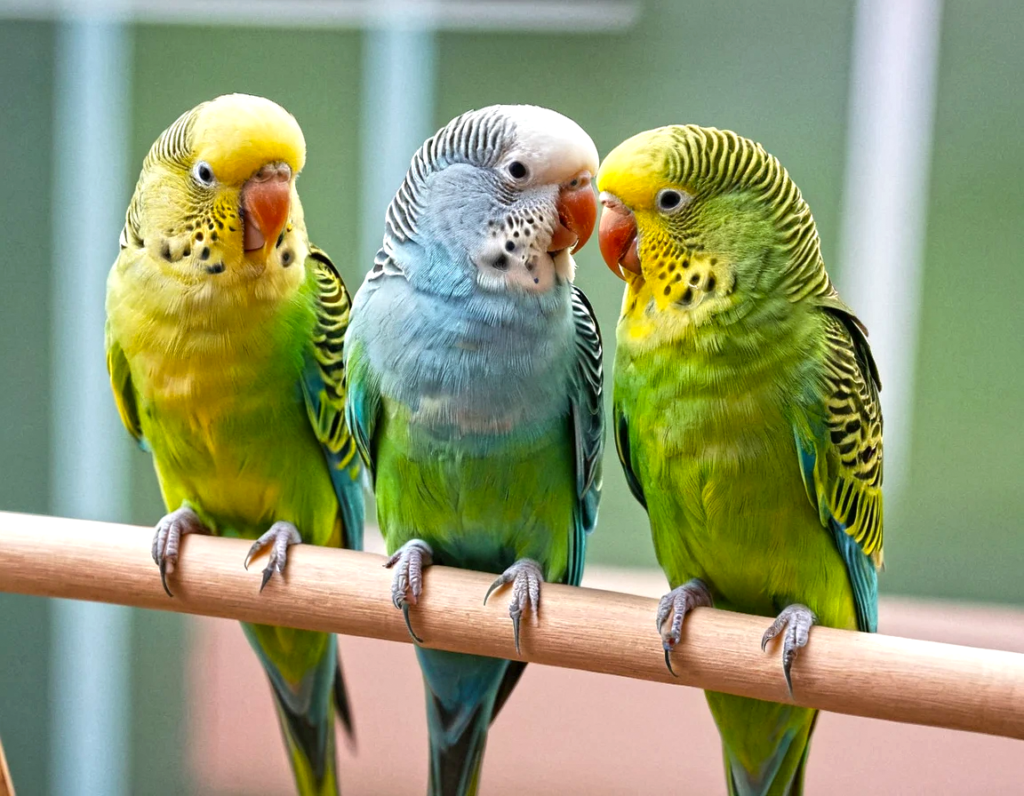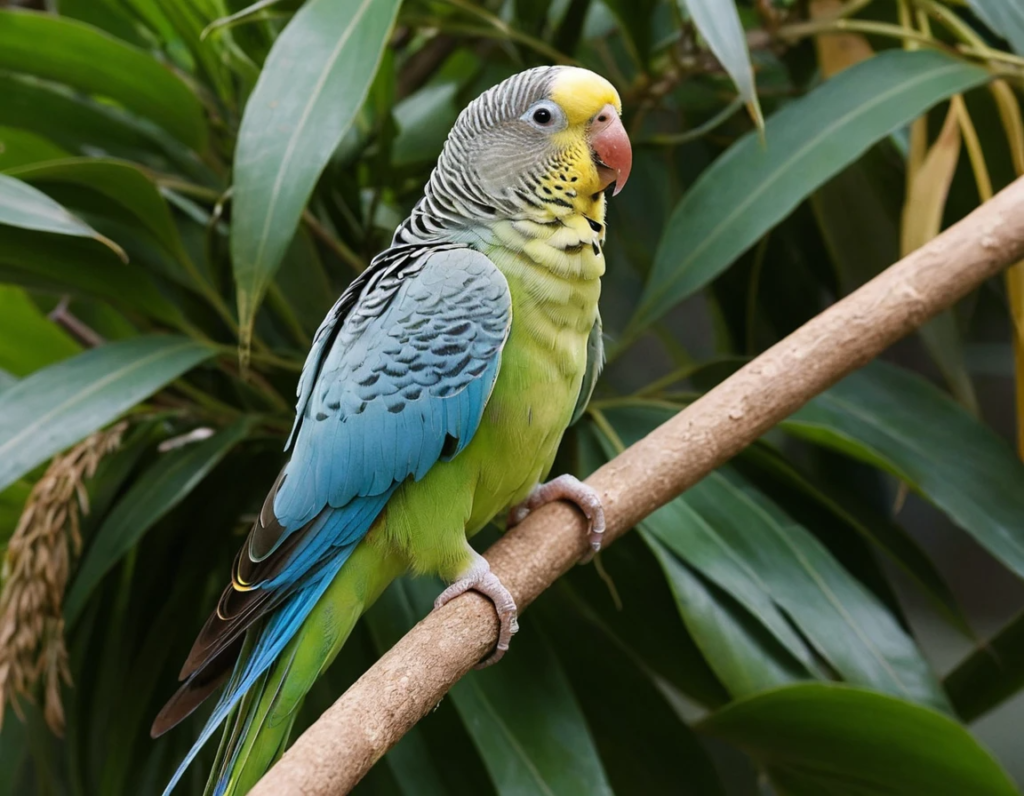
Legal Status of Parakeet Sales:
So, you’ve decided to bring home a parakeet? Great choice! These tiny, chatty birds make wonderful pets. But before you start picturing yourself as a bird whisperer, let’s talk about something crucial—the legal side of Parakeet Sales. Yes, even the tiniest chirpers come with big legal responsibilities.
Are All Parakeets Legal to Buy?
Not all parakeets are created equal in the eyes of the law. While the cute little Budgerigar (commonly called a budgie) is fair game for pet lovers, some species are strictly off-limits. In many countries, native and wild parakeets are protected under wildlife conservation laws. This means buying, selling, or even possessing them could land you in hot water. And trust me, no one wants to explain to a judge why they were smuggling a parrot in their pocket.
The Trouble with Wild Parakeets
Poaching and illegal trade are real problems in the world of Parakeet Sales. Many wild parakeets, like the Alexandrine parakeet or the Rose-ringed parakeet, are protected under international treaties like CITES (Convention on International Trade in Endangered Species). In some countries, even possessing these birds without proper permits could result in heavy fines or even jail time.
Translation: If someone offers you a “rare” parakeet in a shady alley, maybe—just maybe—don’t take them up on that deal.
What Happens If You Buy an Illegal Parakeet?
Let’s say you accidentally (or totally on purpose) bought a protected species. What’s the worst that could happen?
- Fines and penalties Governments don’t take illegal wildlife trade lightly. You could be fined heavily.
- Confiscation – Authorities may take the bird away, and let’s be honest, that would be heartbreaking.
- Legal trouble – In some cases, you could face criminal charges. Imagine telling your friends you went to court over a parrot.
How to Buy a Parakeet Legally
To stay on the right side of the law (and avoid awkward conversations with law enforcement), follow these steps:
- Buy from Licensed Breeders – If a breeder is reputable, they’ll have the necessary permits and paperwork. No shady dealings.
- Check Local Laws – Different countries, and even states, have different rules about Parakeet Sales. A quick Google search could save you a lot of trouble.
- Ask for Documentation – A responsible seller should provide proof that the bird was bred in captivity and not taken from the wild.
The Final Chirp
Owning a parakeet is a joy, but only if you do it the right way. Illegal Parakeet Sales harm wild populations and could put you at risk of legal consequences. So, do your research, buy from the right sources, and enjoy your little feathered friend without worrying about a surprise visit from the authorities.
After all, the only thing a parakeet should be guilty of is waking you up at 6 AM with its endless chatter!
Recent Rescue Operations:
If you thought only humans had dramatic rescue missions, think again! Birds, especially parakeets, have been at the center of some nail-biting rescue operations lately. As illegal Parakeet Sales continue to be a problem, authorities worldwide are cracking down on smugglers and setting these little chirpers free.
The Feathered Damsels in Distress
Imagine a tiny parakeet, dreaming of flying freely in the sky, only to find itself stuffed inside a cramped cage with dozens of others, awaiting an uncertain fate. Sounds like a bird-themed horror movie, right? Unfortunately, this is the reality for many parakeets caught in illegal Parakeet Sales.
Thankfully, rescue teams have been stepping in like real-life superheroes—minus the capes but plus some impressive bird-handling skills.
A Rescue Mission to Remember
In a recent sting operation, wildlife officials swooped down on an illegal bird market (pun totally intended) and rescued over 150 parakeets. These birds were found in terrible conditions—some dehydrated, others barely able to move. The operation was not only about freeing the birds but also about putting an end to unethical Parakeet Sales that exploit these beautiful creatures.
Where Do the Rescued Birds Go?
Once rescued, these birds don’t just get a “good luck” pat on the back (or beak). They are taken to rehabilitation centers where they receive proper care, nutritious food, and a chance to stretch their wings again—literally! If possible, they are released back into the wild, where they can gossip about their thrilling escape with fellow feathered friends.
How You Can Help
While authorities are doing their bit, you can also play a role in stopping illegal Parakeet Sales. Here’s how:
- Don’t Buy from Unverified Sellers – If the seller can’t prove the bird’s origins, walk away.
- Report Suspicious Activity – If you see a shady bird deal going down, let the authorities know.
- Support Ethical Breeders & Adoptions – Always opt for legal and ethical sources when getting a pet parakeet.
A Happy Ending
Rescue operations are bringing hope to thousands of parakeets trapped in illegal Parakeet Sales. With continued efforts, fewer birds will have to experience such distress. So, next time you hear a parakeet chirping away, just imagine—it might be singing a song of freedom, thanks to a successful rescue mission!
And who knows? Maybe it’s also tweeting about how humans need to get their act together when it comes to wildlife conservation!
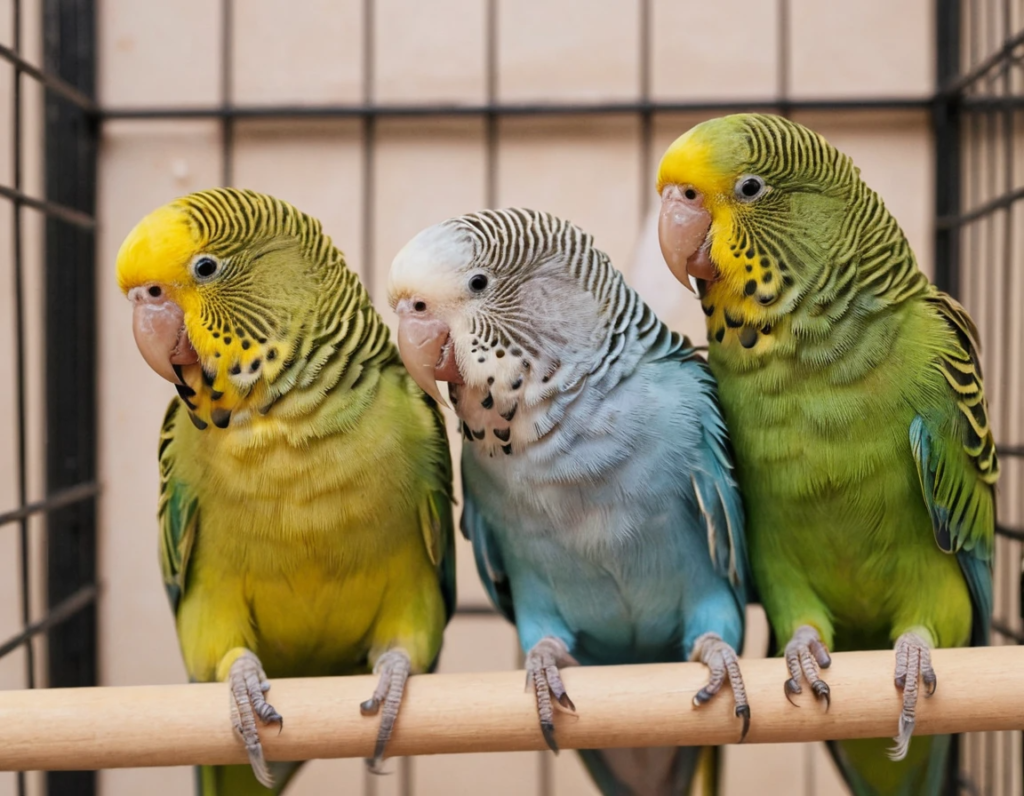
Species Diversity: Exploring the Colorful World of Parakeets
Ever wondered why parakeets come in so many dazzling colors and patterns? It’s not just to impress their bird buddies! The world of parakeets is incredibly diverse, with different species displaying unique traits, colors, and even personalities. If you’re diving into Parakeet Sales, knowing about species diversity can help you choose the perfect feathery companion.
The Many Faces of Parakeets
Parakeets aren’t a single species; they are a whole group of small to medium-sized parrots. Think of them as the bird world’s version of a big, quirky family reunion—lots of similarities, but each one with its own flair. From the popular Budgerigar (aka the classic budgie) to the exotic Derbyan Parakeet, there’s a parakeet for every kind of bird lover.
A Rainbow of Feathers
If you thought all parakeets were just green, think again! Thanks to natural variations and selective breeding, parakeets now come in blues, yellows, whites, and even purples. Some rare ones even look like they’ve taken fashion tips from a high-end designer—nature’s own runway models! When browsing Parakeet Sales, you’ll notice just how diverse their color palette can be.
Personality Matters Too
Parakeets aren’t just about looks—they’ve got personality to match! Some are chatterboxes, mimicking words like tiny feathery comedians. Others are more reserved, preferring a quiet perch to observe the world. Whether you want a talkative companion or a chilled-out bird buddy, species diversity plays a big role in picking the right parakeet.
Why Species Diversity is Important
The variety of parakeets isn’t just cool—it’s essential for their survival. Different species have adapted to different environments, which helps maintain a healthy, balanced ecosystem. Plus, understanding diversity can also help prevent unethical Parakeet Sales that involve endangered or illegally traded species.
Choosing the Right Parakeet for You
When looking through Parakeet Sales, take a moment to consider the species. Do you want a playful and active bird, or a calm and affectionate one? Each species has its quirks, so researching beforehand ensures a perfect match.
The Final Chirp
Parakeets are proof that diversity is beautiful! From their vibrant colors to their unique personalities, every species has something special to offer. So next time you see a parakeet, take a moment to appreciate the incredible variety that nature has created—because life is always better with a little more color and a lot more chirping!
Rare Color Variations:
Parakeets are already charming little creatures, but did you know they come in some truly jaw-dropping colors? While the classic green and yellow budgie is the most common, there are rare color variations that can make a parakeet look like it just stepped out of a fantasy world. If you’re keeping an eye on Parakeet Sales, spotting one of these rare beauties might just make your day!
The Mysterious Purple Parakeet
Yes, you read that right—purple parakeets exist! These birds look like they flew straight out of a watercolor painting. While not entirely natural in the wild, careful breeding has led to this stunning color variation. If you ever spot one in Parakeet Sales, be prepared to pay a little extra for the sheer uniqueness.
Albino and Lutino: The Angelic Parakeets
Albino parakeets (pure white with red eyes) and Lutino parakeets (bright yellow with red eyes) are some of the rarest variations. These birds have a genetic mutation that removes melanin from their feathers, giving them their signature celestial look. If a regular parakeet is a pop song, these birds are a classical masterpiece!
The Mysterious Blackface Parakeet
One of the rarest and most sought-after mutations, the Blackface Parakeet, looks like it’s wearing a tiny superhero mask. These unique birds have dark pigmentation on their face, setting them apart from the usual pastel-colored crowd. Not something you’ll find in your average Parakeet Sales listing!
Rainbow Parakeets: Nature’s Living Art
Who needs a paintbrush when nature already does the job? Rainbow parakeets are a mesmerizing mix of blue, violet, yellow, and green—making them look like tiny flying sunsets. These birds are bred selectively for their dazzling colors, making them a favorite among collectors.
Is Rarity Worth the Price?
With great rarity comes a (sometimes hefty) price tag. Parakeet Sales often list these unusual colors at a premium because they take years of selective breeding to achieve. If you’re looking for a special feathered friend, investing in a rare color variation could be a fun way to add uniqueness to your flock.
The Final Chirp
Rare color variations in parakeets prove that nature has a sense of humor and an eye for beauty. Whether you prefer a classic green budgie or a stunning rainbow mutation, every parakeet brings its own charm. So, if you’re browsing Parakeet Sales, keep an eye out—you might just find a bird that looks like it belongs in a dream!
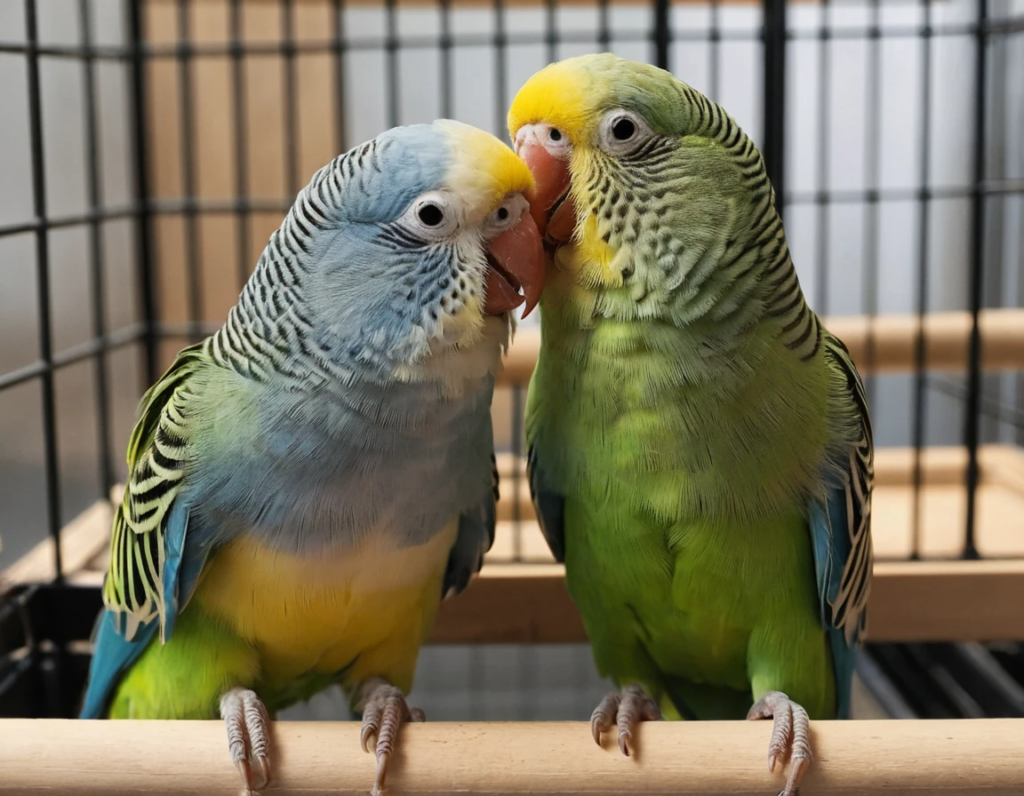
Ethical Considerations: Buying Parakeets the Right Way
Parakeets are cute, chirpy, and full of personality. But before you rush into Parakeet Sales and bring home a feathered friend, there are some ethical considerations to keep in mind. Because let’s face it—no one wants to accidentally support a shady bird-smuggling operation!
Where Do Parakeets Come From?
Before buying a parakeet, it’s important to know where they come from. While many parakeets in pet stores are bred in captivity, some are illegally captured from the wild. Wild-caught birds often suffer from stress, poor health, and the trauma of being separated from their natural habitat. Plus, purchasing these birds fuels illegal Parakeet Sales, which can harm wild populations.
Responsible Breeding vs. Unethical Breeding
Not all breeders are created equal. Some responsible breeders ensure that parakeets are raised in safe, clean environments with proper nutrition and socialization. Others, well… let’s just say their birds might have a better chance at happiness if they ran away and joined a pigeon gang.
When browsing Parakeet Sales, always choose breeders who:
- Provide clean and spacious cages
- Offer a proper diet (seeds alone won’t cut it!)
- Socialize their birds with humans
- Have good knowledge of parakeet care
Avoiding Bird Mills
Yes, bird mills are a thing, and they’re just as bad as puppy mills. Birds are crammed into tiny cages, bred repeatedly, and given little to no medical care. If a breeder is selling birds in bulk at suspiciously low prices, it’s a red flag. Your future pet deserves better than being treated like a factory product!
Adopting: A Kinder Alternative
If you really want to make an ethical choice, consider adoption. Many rescue centers and shelters have parakeets looking for a second chance. Not only will you give a bird a loving home, but you’ll also avoid supporting unethical Parakeet Sales. Plus, adopted birds often come with fun quirks—like knowing a random phrase or having a favorite song.
The Final Chirp
Parakeets make wonderful pets, but buying them responsibly is just as important as caring for them properly. Ethical Parakeet Sales ensure that birds are treated with kindness and respect. So, before you bring home a new feathery friend, do a little homework—you’ll be rewarded with a happier, healthier bird who will chirp happily (and maybe judge you from its perch) for years to come!
Ethical Considerations: Buying Parakeets the Right Way
So, you’ve finally decided to bring home a parakeet—congratulations! But before you get too excited, let’s talk about what it actually takes to care for these little feathered comedians. A happy parakeet isn’t just about throwing some seeds in a bowl and hoping for the best. If you’re checking out Parakeet Sales, knowing their care requirements is a must!
The Right Cage: Bigger is Always Better
Imagine living in a tiny closet your whole life. Not fun, right? Your parakeet feels the same way. A spacious cage is essential for their well-being. Make sure to get a cage that allows plenty of room for flying, perching, and all their daily bird business. Also, horizontal bars are a plus—parakeets love to climb!
Diet: More Than Just Seeds
If you think feeding your parakeet is as simple as tossing in some seeds, think again! A healthy diet includes:
- Pellets (nutritionally balanced and recommended)
- Fresh fruits and veggies (carrots, apples, spinach—no avocados, though, they’re toxic!)
- A little bit of seed mix (think of it as bird junk food—okay in moderation)
- Cuttlefish bone (not as terrifying as it sounds—great for calcium!)
Social Time: No One Likes Being Ignored
Parakeets are social creatures, which means if you’re getting one, be ready to interact! They thrive on attention and love to chat, whistle, and sometimes even mimic human speech. If you’re not home much, consider getting two—because a lonely parakeet is a sad parakeet.
Toys and Entertainment: Keep That Bird Brain Busy
A bored parakeet is a destructive parakeet. Provide plenty of fun toys like mirrors, bells, and chewable wood pieces. Rotate them every so often to keep things exciting. After all, you wouldn’t want to watch the same TV show on repeat forever, would you?
Cleanliness: No One Likes a Messy House
Parakeets might be small, but they sure can be messy! Regular cleaning is essential:
- Change food and water daily
- Clean perches and toys weekly
- Do a full cage cleaning at least once a month
Yes, it’s a bit of work, but your parakeet will thank you with endless happy chirps (and possibly some judgmental side-eyes).
Regular Vet Visits: Prevention is Key
Just like any pet, parakeets need check-ups too. A yearly visit to an avian vet ensures your little buddy is in top shape. And if your parakeet suddenly stops singing, fluffs up excessively, or seems less active, don’t wait—get them checked out ASAP.
The Final Chirp
Parakeets are fun, lovable, and surprisingly smart, but they do require proper care. If you’re browsing Parakeet Sales, make sure you’re ready for the responsibility. A well-cared-for parakeet will reward you with years of companionship, funny antics, and maybe even a little conversation!
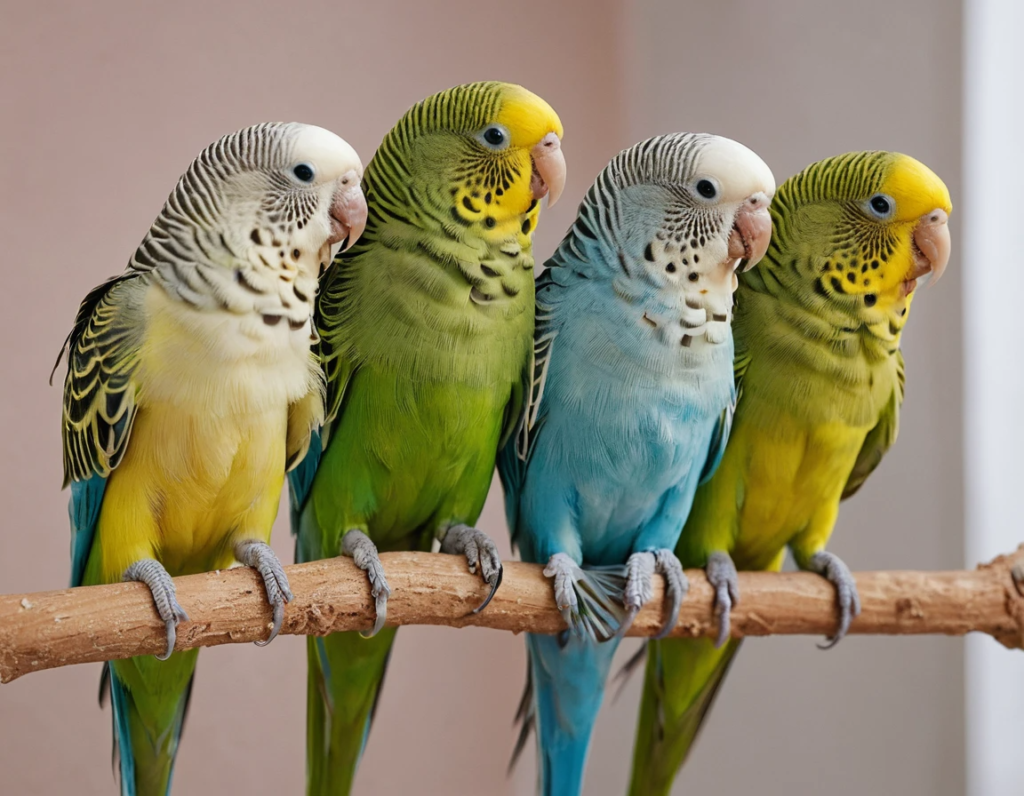
Lifespan and Commitment:
Thinking about bringing home a parakeet? Great choice! But before you jump into Parakeet Sales, let’s talk about something important—commitment. These little birds may be small, but they come with a surprisingly long lifespan. If you’re in it for the long haul, a parakeet could be your perfect companion.
How Long Do Parakeets Live?
On average, parakeets live anywhere from 7 to 15 years, and some even reach 20 with excellent care! That’s longer than most people keep houseplants alive. If you’re adopting a parakeet, think of it as signing up for over a decade of chirps, flaps, and the occasional judgmental stare.
Are You Ready for the Commitment?
Owning a parakeet isn’t just about buying the cutest one from Parakeet Sales—it’s about being ready for the responsibility. Here are some key things to consider:
- Time: Parakeets need daily interaction, socialization, and playtime. If your schedule is busier than a squirrel gathering nuts, you might want to reconsider.
- Space: A proper cage setup, with enough room for flying and perching, is a must. No one likes being crammed into a tiny room all day.
- Costs: Food, toys, vet visits, and cage maintenance—yep, it all adds up! A parakeet might not break the bank, but they do come with expenses.
Building a Long-Lasting Bond
If you’re ready for the commitment, a parakeet can become a wonderful companion. They can learn tricks, mimic sounds, and even form strong emotional bonds with their owners. But, like any relationship, it takes patience, care, and a few millet bribes!
The Final Chirp
Before diving into Parakeet Sales, make sure you’re truly ready for the years ahead. A parakeet isn’t just a pet—it’s a long-term friend. So, if you’re prepared for daily chats, occasional messes, and lots of chirping, then congratulations—you’re ready for the delightful world of parakeet ownership!
Training and Socialisation:
So, you’ve browsed Parakeet Sales and brought home an adorable feathered friend. Now what? Training and socialization are key to having a happy, well-adjusted bird. With a little patience (and some tasty treats), you can teach your parakeet to trust you, perform tricks, and maybe even hold a conversation—well, kind of.
Building Trust: The First Step
Before you teach your parakeet any cool tricks, you need to earn its trust. Imagine a giant suddenly trying to pick you up—yeah, you’d be a little freaked out too! Start by spending time near the cage, talking softly, and letting your bird get used to your presence. Offer treats through the bars and avoid sudden movements. Once your parakeet is comfortable, you can move on to hand-training.
Hand-Training: No, Your Finger Isn’t a Perch—Yet
The goal is to get your parakeet to step onto your finger willingly. Hold a treat (like millet) and slowly introduce your hand into the cage. Encourage them to step up using a gentle nudge on their belly. With consistency, your parakeet will soon hop on like a pro. And if they give you the side-eye and refuse? Patience, my friend!
Teaching Tricks: The Fun Begins
Parakeets are smart little birds, and with time, they can learn fun tricks like:
- Target Training: Teaching them to follow a stick (or your finger) for rewards.
- Spin Around: Luring them in a circle with a treat.
- Talking & Mimicking: Some parakeets can pick up words—just be careful what you say around them!
Training sessions should be short (5-10 minutes) and always end on a positive note. And don’t forget—parakeets love praise, so be sure to shower them with compliments (even if they ignore you).
Socialization: Nobody Likes a Lonely Bird
Parakeets thrive on social interaction. If you have only one bird, make sure to spend plenty of time engaging with them. If you have more than one, they’ll entertain each other, but you still need to be part of the flock. Play music, chat with them, and provide interactive toys to keep their little brains busy.
The Final Chirp
Training and socialization take time, but the rewards are totally worth it. A well-trained parakeet is not only fun but also a great companion. So, next time you’re checking out Parakeet Sales, remember—it’s not just about buying a bird; it’s about building a bond that lasts a lifetime!
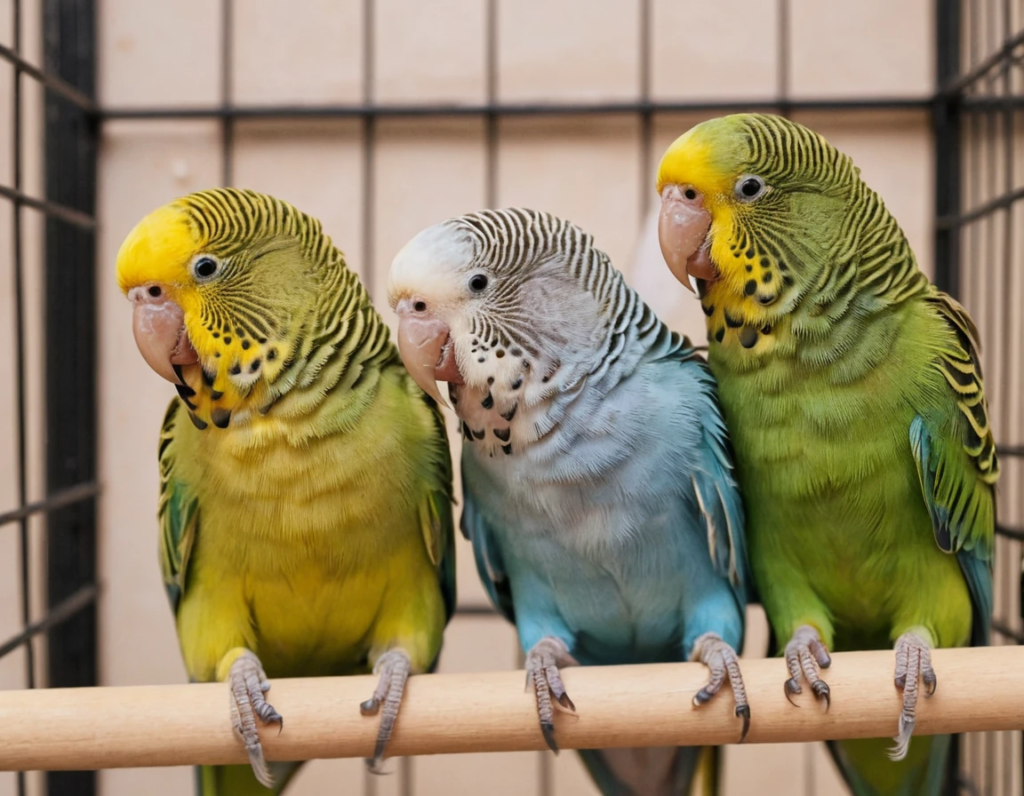
Health Monitoring: Keeping Your Parakeet in Tip-Top Shape
So, you’ve gone through Parakeet Sales and found the perfect feathered companion—great choice! But owning a parakeet isn’t just about admiring their cute chirps and colorful feathers. Keeping an eye on their health is just as important. Birds are experts at hiding illnesses (it’s a survival thing), so as their human, it’s up to you to be extra observant.
Signs of a Healthy Parakeet
A happy, healthy parakeet is easy to spot. They should be:
- Active and Playful: A parakeet that’s zooming around the cage and getting into mischief is a good sign.
- Bright-Eyed and Alert: If their eyes look dull or droopy, it’s time to investigate.
- Eating and Drinking Regularly: No bird has ever willingly skipped a meal. If yours does, something’s up!
- Smooth, Clean Feathers: A healthy parakeet preens itself regularly. Fluffy, well-groomed feathers mean all is well.
Common Health Issues to Watch For
Parakeets may be small, but their health problems can be big if ignored. Here are some warning signs:
- Fluffed-Up Feathers for Long Periods: Sure, they puff up when they’re sleepy, but if they stay fluffed all day, something’s wrong.
- Changes in Droppings: Yes, poop-checking is now part of your life. If droppings change color or become too watery, it’s a red flag.
- Unusual Sleeping Patterns: If your parakeet is napping more than usual, it might not just be lazy—it could be sick.
- Sneezing or Discharge from the Nose: Birds don’t get seasonal allergies, so any nasal discharge should be checked.
- Loss of Appetite or Weight: If your bird is ignoring its favorite treats, get them to a vet ASAP!
Regular Check-Ups: Prevention is Key
Even if your bird looks fine, a yearly visit to an avian vet is a must. Think of it as a wellness check-up to catch any hidden issues early. Plus, you’ll earn bonus points for being a responsible pet parent.
Diet and Exercise: The Secret to a Long, Happy Life
Good nutrition and plenty of exercise keep your parakeet in top shape. A balanced diet includes:
- Pellets (as the main food source)
- Fresh fruits and veggies (except avocado—it’s toxic!)
- A little seed mix (because everyone deserves a treat)
And don’t forget daily flight time! A parakeet that flies around regularly is a healthy, happy parakeet.
The Final Chirp
Health monitoring might sound like a lot, but it’s really just about knowing your bird and paying attention to changes. If you’re browsing Parakeet Sales, remember that a healthy bird is a happy bird. Stay observant, keep their diet on point, and provide plenty of love—your parakeet will reward you with years of joyful chirping and playful antics!
Adoption vs. Purchase:
So, you’ve scrolled through Parakeet Sales, fallen in love with these tiny feathered comedians, and now you’re wondering—should you adopt or buy? It’s a big decision! Whether you bring home a parakeet from a shelter or purchase one from a breeder, both options have their pros and cons. Let’s break it down so you can make the best choice for both you and your future chirping companion.
Adoption: Giving a Bird a Second Chance
Adopting a parakeet is like rescuing a tiny, feathery friend who needs a home. Here’s why adoption could be the way to go:
- You’re Saving a Life – Many birds in shelters need a second chance at a loving home.
- Lower Cost – Adoption fees are generally lower than buying from breeders.
- Pre-Screened Health – Many adopted birds have already been checked by vets and may even come with their own cage.
- Feel-Good Bonus – Nothing beats the warm feeling of giving an abandoned parakeet a fresh start.
Of course, adopted birds may come with a bit of baggage. Some may need extra patience and socialization, especially if they’ve had a rough past. But hey, who doesn’t love an underdog… or underbird?
Purchasing: Starting from Scratch
If you’re set on buying a parakeet, whether from a breeder or pet store, there are benefits to consider:
- You Get a Young Bird – Buying often means getting a baby parakeet, which can make training and bonding easier.
- More Breed and Color Options – Breeders offer a variety of colors and mutations that may not be available for adoption.
- Known Background – A purchased bird comes with a health history, which can be reassuring.
However, make sure to do your homework! Some pet stores and breeders don’t always prioritize bird welfare. Always buy from reputable sources and avoid places that seem to treat their birds like inventory instead of living creatures.
Things to Consider Before Deciding
Before committing to either adoption or purchase, ask yourself:
- Do I have the time and patience to bond with a possibly older, rescued bird?
- Am I looking for a specific color or age that might be easier to find through Parakeet Sales?
- Can I provide a loving home no matter where the bird comes from?
The Final Chirp
At the end of the day, whether you adopt or buy, what matters most is the care and love you provide. If you’re ready to welcome a chirpy little companion into your home, make sure you’re choosing responsibly. And remember—no matter where your parakeet comes from, once they start squawking for attention, they’re officially the boss!
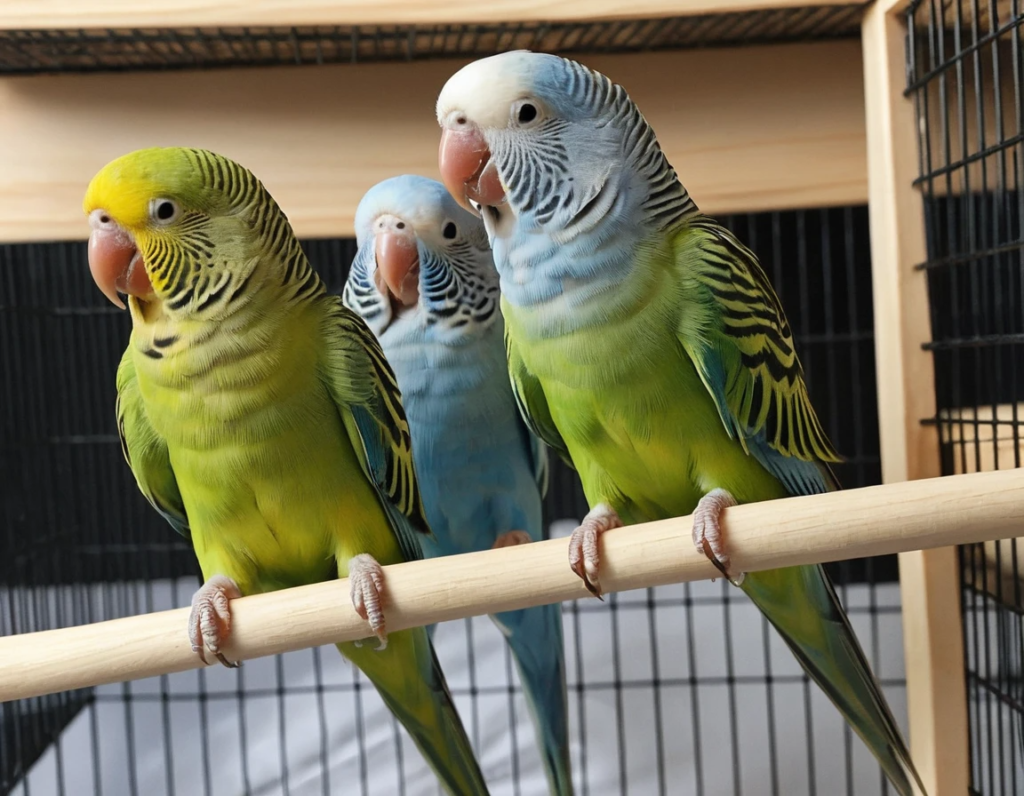
(FAQs) about Parakeet Sales:
General Questions
Where can I buy a parakeet?
- You can buy parakeets from pet stores, breeders, and online listings. Adoption from rescue centers is also an option.
How much do parakeets cost?
- Prices vary depending on breed and color, but generally, they range from $20 to $100.
Are parakeets legal to own?
- In most places, yes! But always check local regulations, especially for exotic species.
Should I buy one parakeet or two?
- Parakeets are social birds and do best in pairs, but if you have time to interact daily, a single bird can thrive.
What should I look for when buying a parakeet?
- Choose an active bird with bright eyes, smooth feathers, and a healthy appetite. Avoid birds that seem lethargic or puffed up.
Care & Maintenance
What kind of cage does a parakeet need?
- A spacious cage (at least 18×18 inches per bird) with horizontal bars for climbing is ideal.
What do parakeets eat?
- A balanced diet includes pellets, fresh vegetables, fruits, and occasional seeds.
How often should I clean the cage?
- Spot-clean daily and do a deep clean at least once a week.
Do parakeets need toys?
- Yes! Parakeets need toys to stay mentally and physically active. Rotate them to prevent boredom.
Can parakeets be trained?
- Absolutely! With patience, they can learn tricks, words, and even step onto your hand.
Health & Lifespan
How long do parakeets live?
- On average, they live 7 to 15 years, with good care.
What are common health problems in parakeets?
- Respiratory infections, mites, and digestive issues are common concerns.
How can I tell if my parakeet is sick?
- Watch for signs like fluffed-up feathers, loss of appetite, or unusual droppings.
Do parakeets need a vet?
- Yes! A yearly check-up with an avian vet is recommended.
Why is my parakeet losing feathers?
- It could be normal molting, but excessive feather loss might indicate stress or illness.
Behavior & Socialization
Do parakeets get lonely?
- Yes, they thrive on interaction. If you only have one, spend time with them daily.
Can parakeets talk?
- Some can learn words and phrases, especially males, but not all parakeets will talk.
Why is my parakeet chirping so much?
- Chirping is normal! It could mean excitement, socializing, or seeking attention.
Do parakeets bite?
- Sometimes, but usually out of fear. With patience, biting can be reduced through trust-building.
Can I let my parakeet fly around the house?
- Yes, but make sure the room is safe—no open windows, ceiling fans, or dangerous objects.

